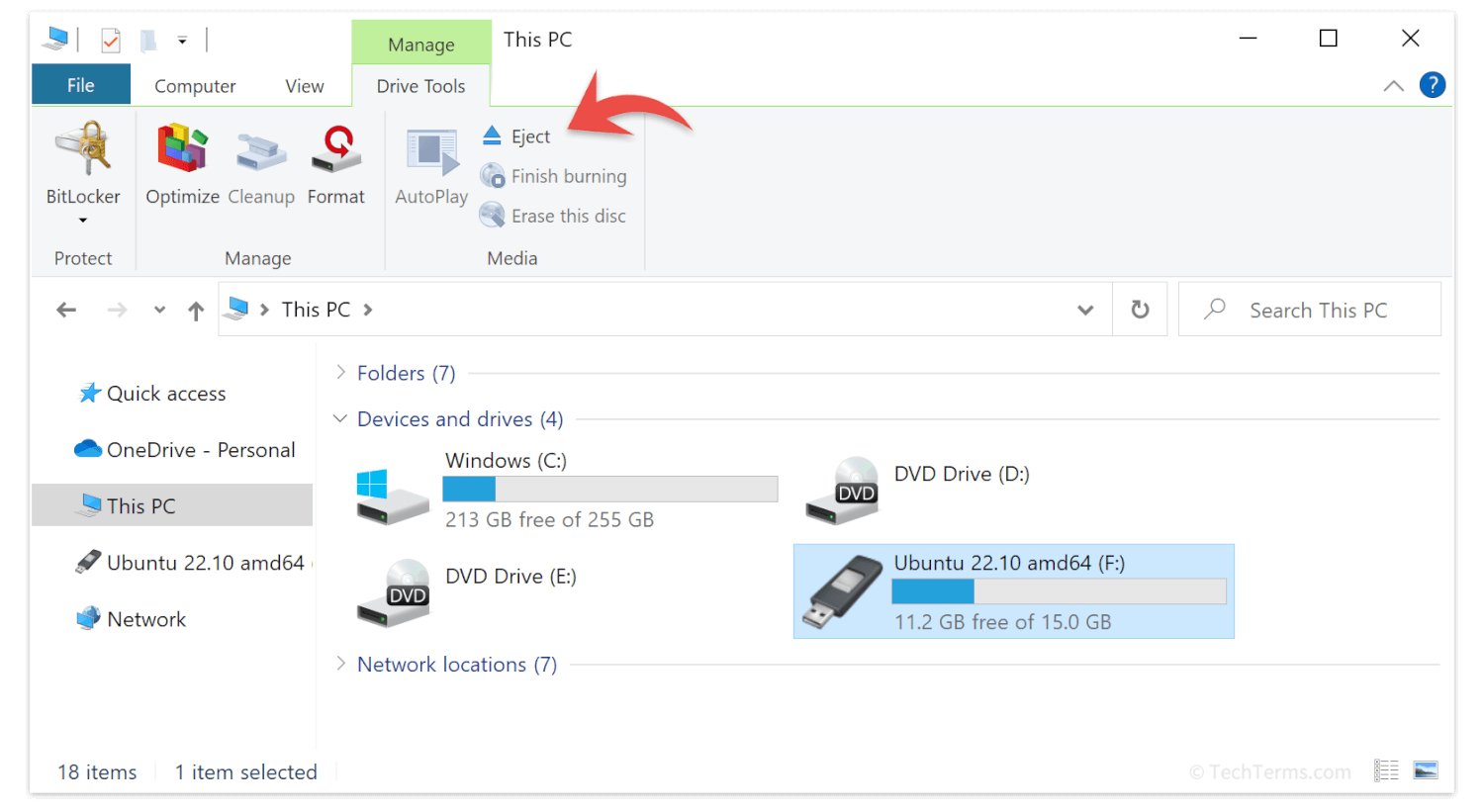Unmount
Unmounting is the software process of deactivating a disk volume to allow it to be safely disconnected. An unmounted storage disk is still physically connected to a computer and powered on, but the computer cannot read or write data to it. It is the opposite of mounting a disk, which activates the disk volume and makes its contents available to the computer's operating system.
Disconnecting a disk while the operating system is in the middle of a data transfer may lead to data corruption or loss. This problem can affect hard drives and solid-state drives (both internal and external), as well as USB flash drives, memory cards, and even disk image files; optical discs, meanwhile, are automatically unmounted during ejection. While mounting a disk happens automatically, unmounting requires actively issuing an Eject or Unmount command.
To keep your data safe, always unmount a disk before disconnecting it. In Windows, first select or open the disk in File Explorer, then click the Drive Tools tab and click the Eject button. On macOS, click and drag the drive's icon from the desktop to the Trash icon on the dock (which becomes an Eject icon), or click the Eject button next to the disk's name in the Finder sidebar. On Unix and Linux computers, you can use the umount command (note that it is not unmount) to unmount a disk volume.

 Test Your Knowledge
Test Your Knowledge